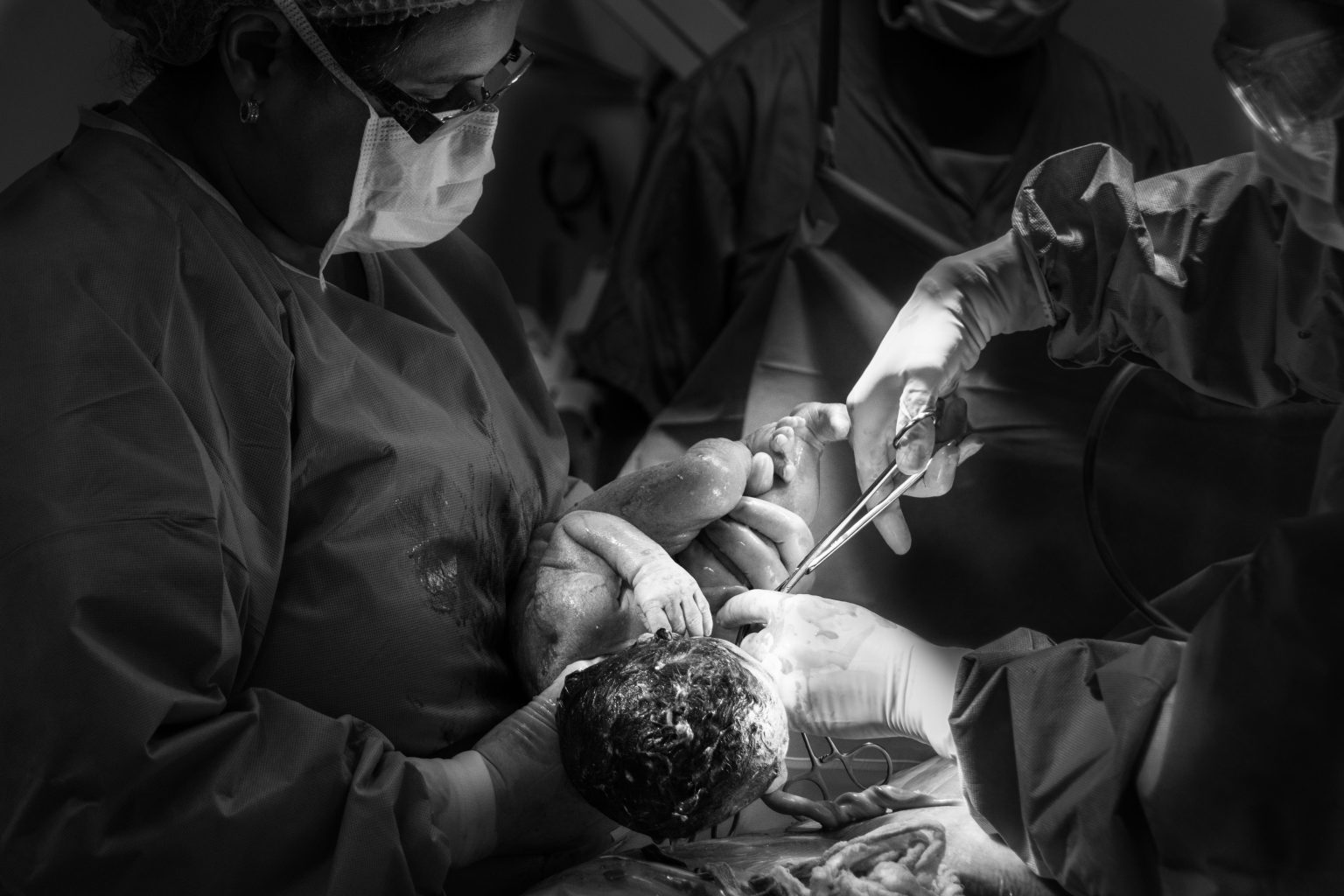C-section is a surgical birth that helps keep mom and baby safe in the event of a vaginal birth. If you’ve just had your first C-section, you may have a lot of questions about how to care for yourself after the procedure. Because a C-section is a serious procedure, it takes time for your body to recover.
Creating a thorough postpartum care plan will help you feel more in control of your journey. Remember: recovery takes time, and that’s okay. Don’t worry, we’re here to help. Here are the best C-section recovery tips every new mom needs!
How Soon Can You Recover After a C-Section?
Typically, the recovery process after a C-section can last from 6 to 8 weeks, depending on each person’s physical condition. In the first few days after surgery, you will feel sore around the incision area, your body will be tired, and you will need support to move. In the following weeks, you can expect:
- Feelings of tightness or discomfort in the abdomen.
- Mild uterine contractions occur as the uterus gradually returns to its original position.
- You may experience a sore back after C-section due to the hormone relaxin or pressure from holding the baby.
- Long-term fatigue is due to the recovery process and caring for the baby.
In addition, you may also have to deal with the condition of a C-section pouch or Diastasis Recti. Therefore, you need a thoughtful recovery plan to regain your health more firmly every day.
8 Helpful Post-C-Section Recovery Tips
Your body needs to relax and heal gradually after a big procedure like a C-section. Here are some helpful tips to help make your post-C-section healing process easier and smoother.
1. Prioritize Rest
Just like any surgery, you need to prioritize rest and take time for your body to recover after a C-section. Normally, mothers will have to stay in the hospital for about 2-4 days after a C-section, and if there are complications, the time will be longer.
After that, you will need 6-8 weeks for your body to recover fully. Moms shouldn’t lift big things, have sex, drive, or do a lot of housework during this time. This will help limit the impact on the incision, avoid the risk of further injury, and recover faster.
It sounds simple, but getting enough rest after a C-section will be very challenging because you still have to take care of your little angel. It is advised to try to get sleep whenever the infant does. Take advantage of the time when your baby is sleeping to rest, and don’t hesitate to ask for help from your partner, relatives, or friends to help.
2. Look After Yourself
Next, always listen to your body and be more careful when moving. You can refer to tips such as:
- When sneezing or coughing, always hold onto a soft pillow to protect the surgical incision.
- Limit going up and down stairs often.
- Keep things like diapers, breast pumps, food, or necessary supplies close to you to limit standing up too many times.
- Do not lift anything heavier than your baby. If necessary, ask for help from your partner, relatives, and friends.
- Avoid over-exercising. Instead, you can walk gently to prevent constipation, blood clots, and help the wound heal faster.
3. Ease Your Pain
After a C-section, you will also have to deal with persistent pain. Therefore, you can consult your doctor about safe pain relievers, especially when breastfeeding. Depending on the level of pain, your doctor will prescribe over-the-counter (OTC) medications such as ibuprofen (Advil, Motrin) or acetaminophen (Tylenol). You can also combine the method of applying heat to relieve pain.
4. Maintain a Healthy Diet
A healthy, well-balanced diet after C-section will provide your body with the nutrients it needs to recover better. Good nutrition is also beneficial for your baby’s development, as breast milk is the main source of nutrition during this time. You should eat a variety of foods to help both mother and baby stay healthy. And don’t forget to drink plenty of water to help prevent constipation and increase milk supply.
5. Manage Postpartum Changes
After a C-section, you will have to face many changes in your body, especially the abdomen. You may experience a C-section pouch or, more seriously, Diastasis Recti.
Diastasis Recti is a condition in which the rectus abdominis muscles are separated on both sides, causing your abdomen to protrude and become unsightly. This condition can be completely improved with a postpartum belt and proper exercise. The postpartum belt will help stabilize the abdominal muscles and provide postural support to help you recover better after a C-section.
6. Attend Your Postpartum Checkups
You also need to see your obstetrician regularly during your fourth trimester (12 weeks after delivery). The American College of Obstetricians and Gynecologists (ACOG) recommends that you see your obstetrician regularly during this time to monitor your recovery as closely as possible.
The first visit should be no later than three weeks postpartum, and the last visit should be around 12 weeks. Your obstetrician will discuss your physical recovery, your mental health, your baby’s health, birth control, and ways to manage chronic conditions or complications.
7. Managing Physical Discomfort
You also have to deal with a lot of discomfort due to physical changes after the baby is born. Changes you may experience include:
- Pain due to uterine contractions
- Breast tenderness
- Lochia
- Vaginal dryness
- Changes in skin condition, sagging, or acne
- Headaches
Discomforts such as postpartum pain due to uterine contractions and lochia will go away on their own. While other discomforts need to be treated properly. You can use vaginal creams to help reduce vaginal dryness. Use OTC pain relievers to limit headaches and add nutrients to the skin and hair.
8. Emotional and Mental Health
Last but not least, pay attention to andtake care of your mental health. Childbirth is an emotional experience, mixed with joy and challenges, especially for mothers who have had a caesarean section. Those who have had an emergency C-section or a difficult birth may experience difficult emotions during and after birth.
Don’t keep it to yourself, but share it with your partner, friends, or therapists. Taking care of your mental health will help you recover better and reduce the risk of postpartum depression.
Self-Care and Long-Term Healing
Don’t rush — every step of recovery is worth celebrating. Recovery from a C-section can take time, and that’s perfectly normal. You need to listen to your body to find the best way to recover, as every mother’s body is different. So, stay focused on taking care of yourself, and you’ll feel more in control of your journey.
Some women experience lingering pain after a C-section. Others experience muscle weakness, urinary incontinence, or postpartum depression. These issues are common, and there’s no need to feel ashamed if you experience them. Every mother’s recovery is different, so reach out to your doctor or midwife for professional support. They can help you navigate these long-term issues better.
Bottom Line
Recovering from a C-section is a long journey that requires patience, self-care, and lots of love for yourself. Hopefully, these tips will help you feel more confident in your recovery. Listen to your body, give yourself time, and remember: you’re doing great! Wishing you a smooth, easy recovery journey filled with joy and happiness with your little angel!



